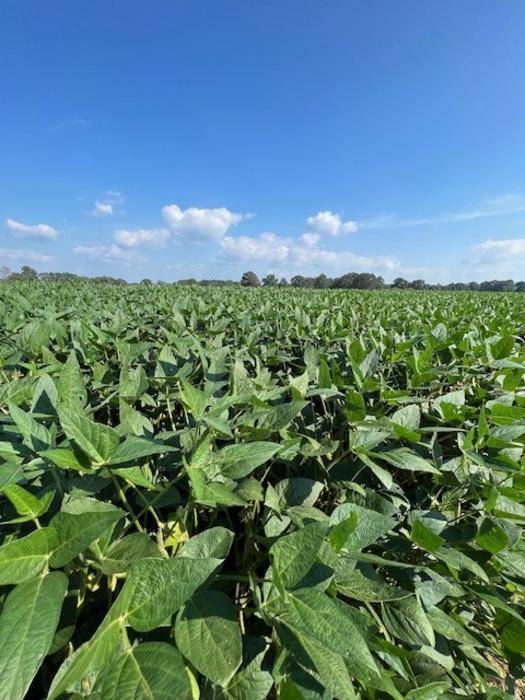In the realm of agricultural science, the fight against plant pathogens has taken on new significance, particularly in light of the crucial role that soybeans play in global food security. A recent study published in the journal Molecular Plant-Microbe Interactions sheds light on the intricate genetic responses of soybean varieties when faced with the formidable challenge posed by soybean cyst nematodes (SCNs). These microscopic pests contribute to significant crop losses, costing farmers billions annually, making the findings of this research particularly timely and relevant.
Conducted by researchers led by Mst Shamira Sultana at the Hewezi Lab of the University of Tennessee, the study has unveiled groundbreaking insights into how different soybean varieties react to SCNs at a genetic level. This research not only enhances our understanding of plant-pathogen interactions but also holds the promise of fostering the development of more resilient crops. By employing state-of-the-art RNA sequencing techniques, the researchers were able to delineate the complex gene expression patterns that take place in soybean roots during nematode infections.
The findings reveal a stark contrast between resistant and susceptible soybean varieties. Resistant plants exhibit an upregulation of genes linked to immune responses, allowing them to mount a robust defense against nematode intrusion. This activation of defensive genes is essential for thwarting the damaging effects of the nematodes. On the other hand, susceptible varieties fail to activate these genes adequately, rendering them defenseless against the onslaught of SCNs. This discrepancy highlights the critical importance of genetic factors in determining a plant’s ability to withstand pathogen attacks.
Intriguingly, the researchers discovered that specific genes are regulated in opposing ways depending on the resistance status of the soybean variety. This newfound understanding of how plants differentiate between types of nematode threats could open up exciting avenues for agricultural biotechnology. By pinpointing the underlying genetic mechanisms at play, scientists can potentially manipulate these pathways to enhance resistance in otherwise vulnerable crops.
One of the most promising aspects of this research is its prospective application in breeding programs. As highlighted by Tarek Hewezi, one of the study’s lead researchers, the distinct genetic responses observed across various soybean lines suggest opportunities for targeted breeding approaches. By selecting and propagating varieties that exhibit stronger immune responses to SCNs, agronomists could develop soybean strains that naturally resist nematode infections. This could significantly diminish farmers’ reliance on chemical treatments, paving the way for more sustainable agricultural practices.
As the agricultural community grapples with the challenges posed by pests and pathogens, the implications of SCN research extend beyond immediate crop health. The economic burden that SCNs impose on global agriculture is staggering. Consequently, the advancement of resistant soybean cultivars not only aids farmers but also contributes to broader efforts aimed at achieving food security. Sustainable farming practices are increasingly in demand as the world population continues to grow; therefore, the pursuit of natural resistance mechanisms in crops becomes paramount.
This research also opens doors to interdisciplinary collaborations within the scientific community. As insights into plant biology advance, related fields such as molecular genetics, genomics, and ecology stand to benefit tremendously. Understanding how plants interact with pests at a genetic level can inform not only the breeding of more resilient crops but also ecological management strategies that promote healthy ecosystems, thereby enhancing biodiversity.
Enhancing resistance to nematodes also aligns with current trends in environmental stewardship. With pressures mounting to reduce chemical pesticide usage, this research underscores the importance of biological solutions in agriculture. By focusing on the intrinsic defense mechanisms of plants, scientists are harnessing nature to drive innovation in pest control. The ultimate goal is to create a balanced system where crops can defend themselves against pests and diseases without heavy reliance on external inputs.
As this research progresses, its findings are expected to inspire further studies and investigations. The complexity of plant-pathogen interactions warrants continued exploration, and future research could delve into the influence of environmental factors on these genetic responses. For example, how do varying levels of soil nutrients, moisture, or temperature affect the activation of immune responses in different soybean varieties? Understanding these relationships will be vital for predicting how crops might react to changing climate conditions.
In conclusion, the work of Mst Shamira Sultana and her team marks a significant milestone in the ongoing battle against agricultural threats. By elucidating the genetic underpinnings of resistance to soybean cyst nematodes, they not only shed light on a critical area of plant biology but also pave the way for practical applications that promise to enhance global food production. As research continues in this domain, the hope is that farmers will soon have access to crop varieties that are not only resilient to nematodes but can thrive in a rapidly changing agricultural landscape.
The implications of this research resonate well beyond the laboratory. As we continue to explore the intricacies of plant immunity and pathogen interactions, we inch closer to a future where farming can become more sustainable, efficient, and productive. The pursuit of knowledge in plant genetics is a vital front in our ongoing quest to ensure food security for generations to come.
Subject of Research: Genetic mechanisms of resistance in soybean varieties to soybean cyst nematodes.
Article Title: Differential Transcriptome Reprogramming Induced by the Soybean Cyst Nematode Type 0 and Type 1.2.5.7 During Resistant and Susceptible Interactions.
News Publication Date: 17-Dec-2024.
Web References: Molecular Plant-Microbe Interactions
References: Not applicable.
Image Credits: Hewezi Laboratory, University of Tennessee.
Keywords: Soybeans, SCN resistance, plant genetics, sustainable agriculture, crop loss prevention, agricultural biotechnology, nematode interactions, molecular biology, RNA sequencing, food security, ecological management, plant immunity.
Tags: agricultural science advancementscrop loss prevention strategiesfood security and agriculturegenetic responses of soybeansimmune response in plantsmolecular plant-microbe interactionsnematode pest managementplant-pathogen interactionsresilient crop developmentRNA sequencing in agriculturesoybean cyst nematodes resistancesoybean variety research





